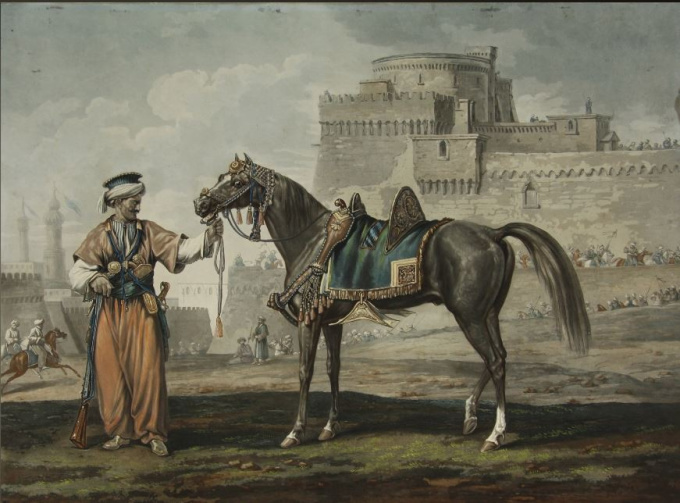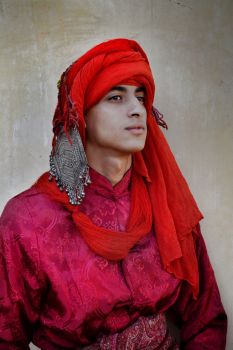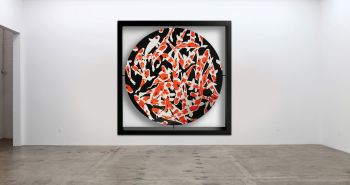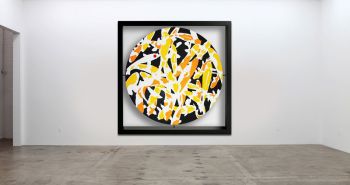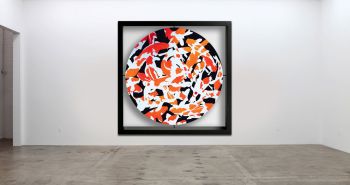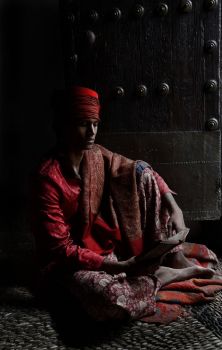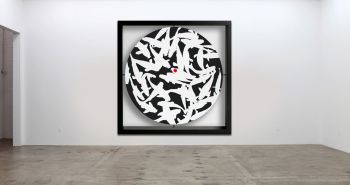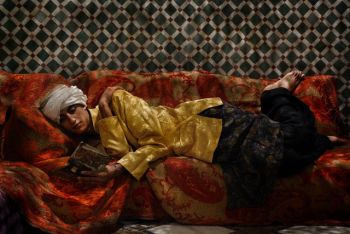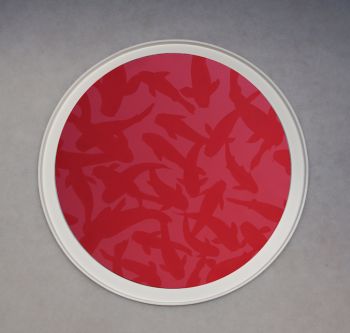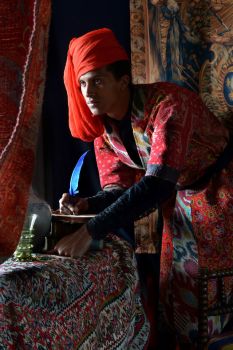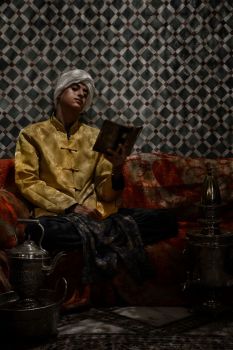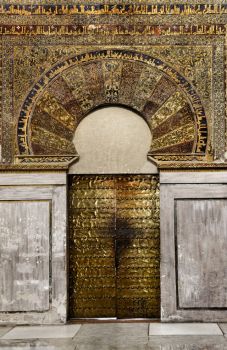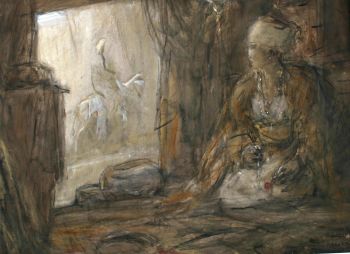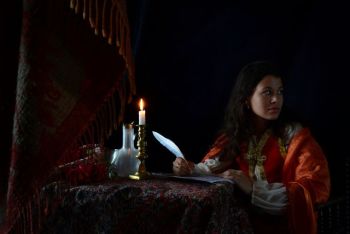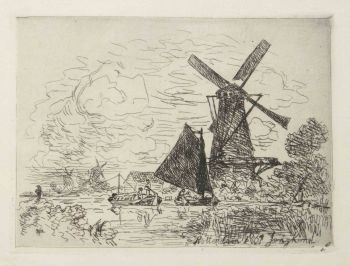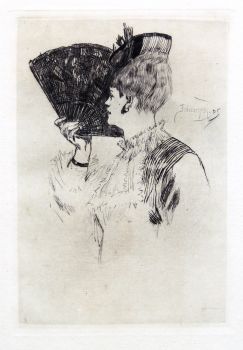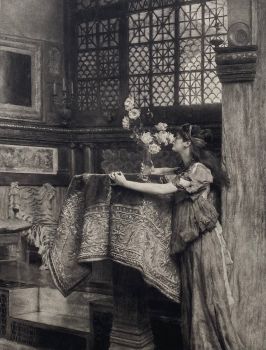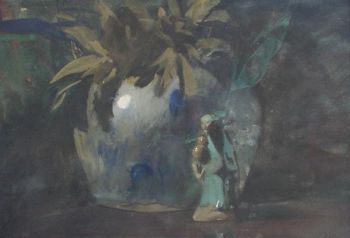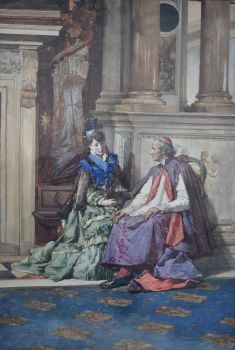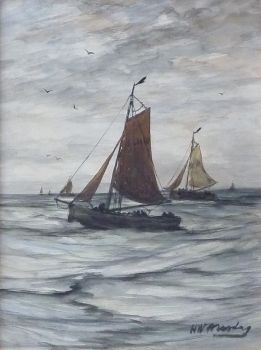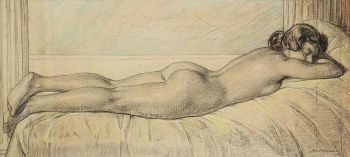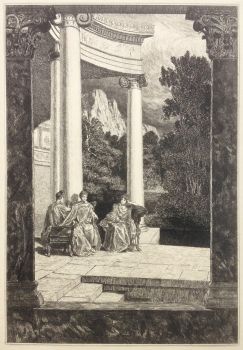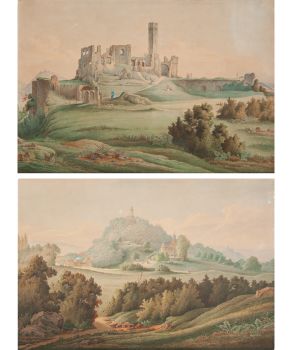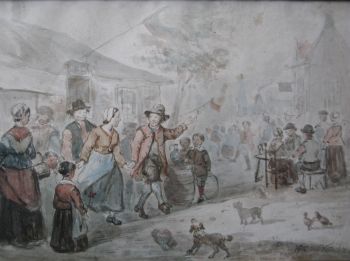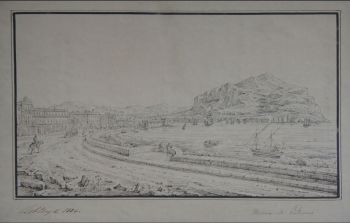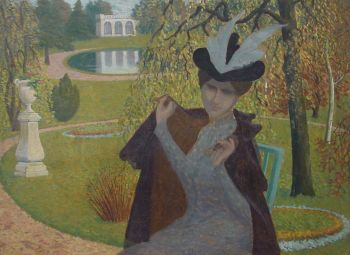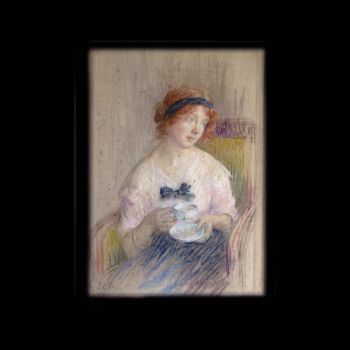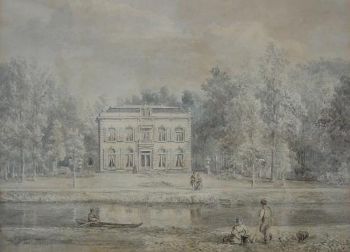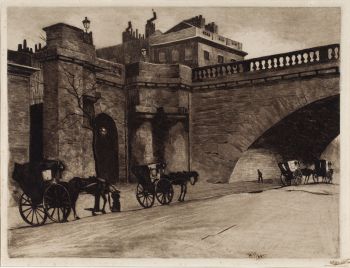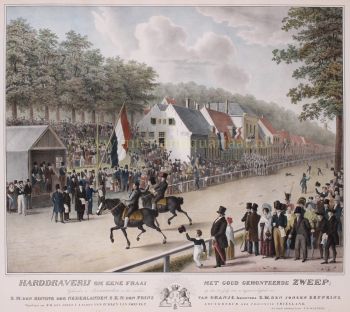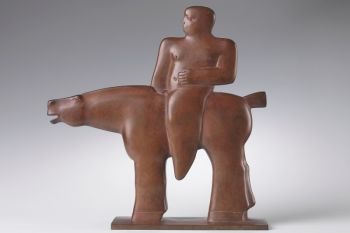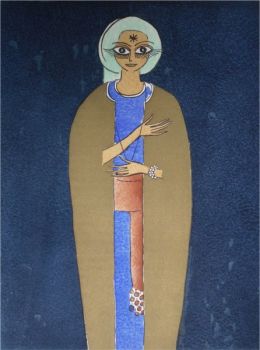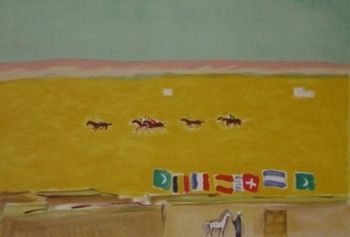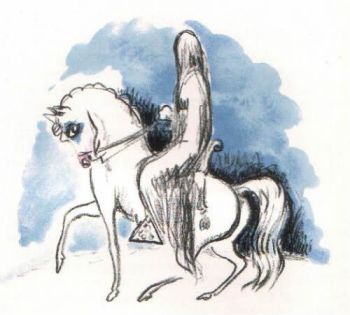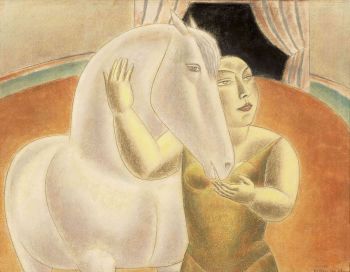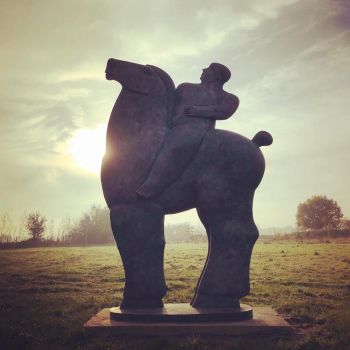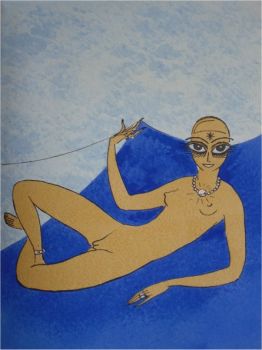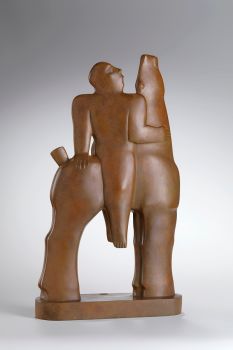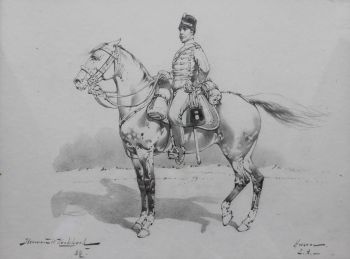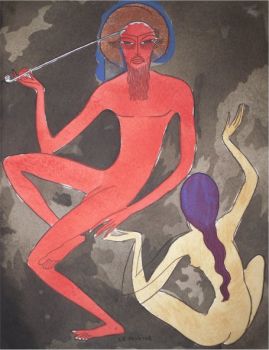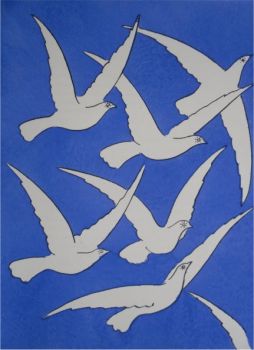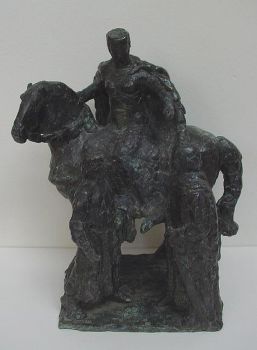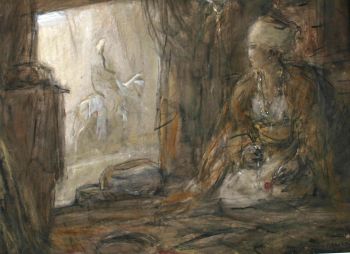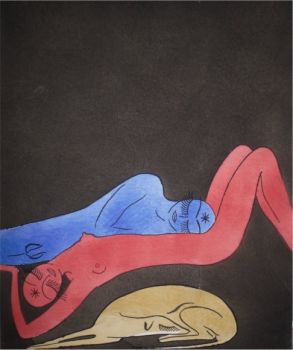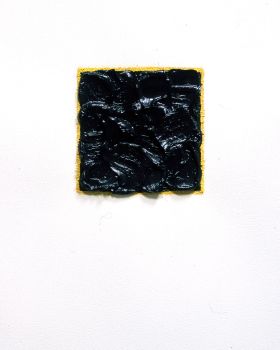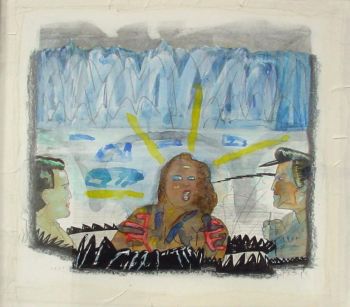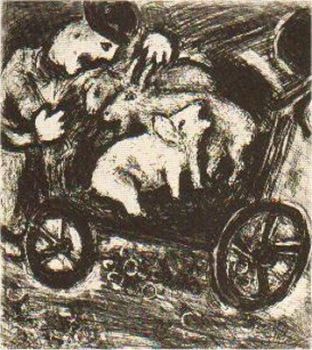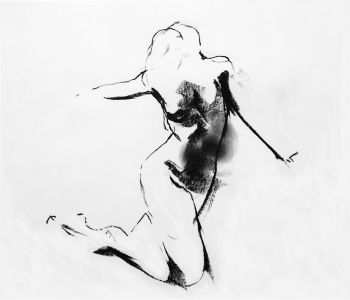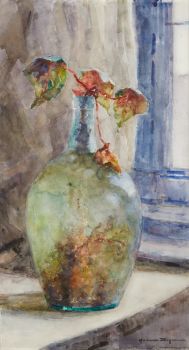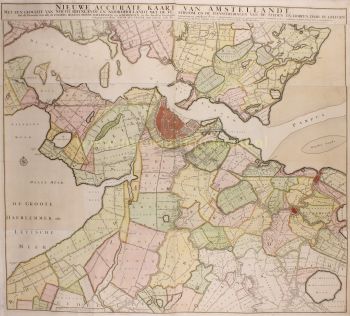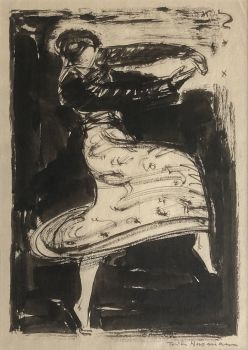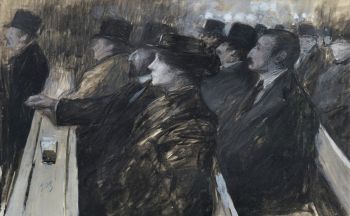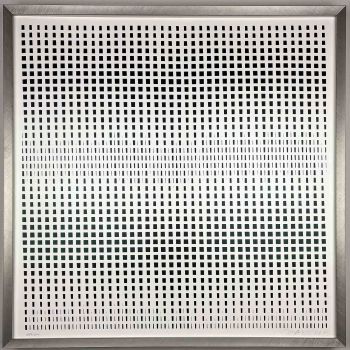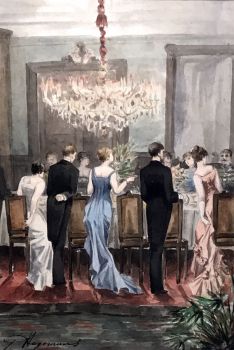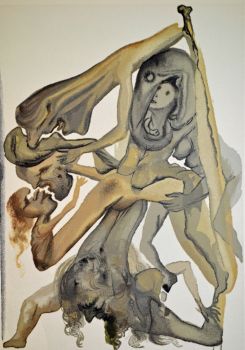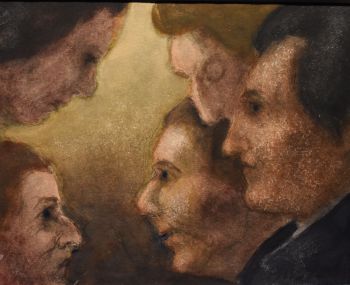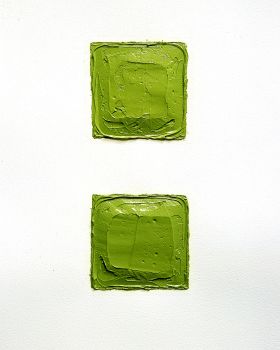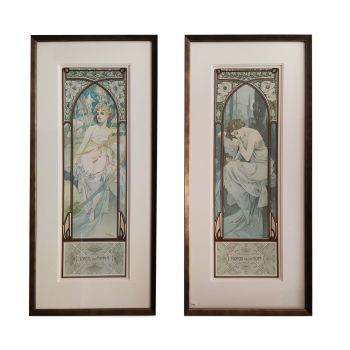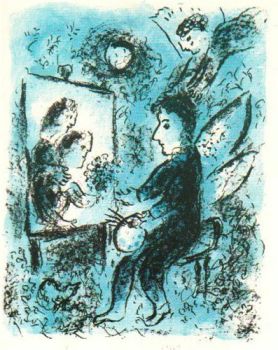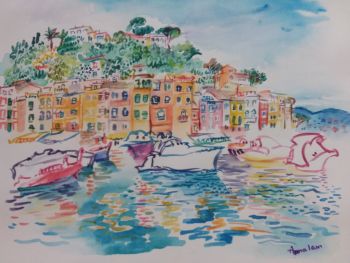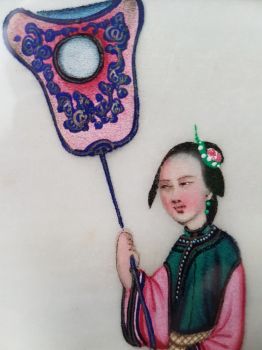'A Mameluk Leading His Horse' and 'Fight between a hussar and Mameluk'.(2x) 1820
Carle Vernet
TintaPapelAcuarela
73 ⨯ 94 cm
Actualmente no disponible a través de Gallerease
- Sobre la obra de arteCarle Vernet: 'A Mameluk Leading His Horse' and 'Fight between a hussar and Mameluk'.
Two aquatint etchings in color, enhanced with watercolor. Engraved by Philibert-Louis Debucourt (1755-1832) after paintings by Carle Vernet.
Printed by Daude and published by Charles Bance & Aumont in 1820.
The aquatint 'Combat' with the year 1811 in the plate for the year in which the original painting was made.
In 19th century frames with title description in French.
One aquatint with no margins, the other with folded margins.
Antoine Charles Horace (Carle) Vernet was a French painter, the youngest child of Claude Joseph Vernet, and the father of Horace Vernet. Born in Bordeaux, Vernet was a pupil of Nicolas-Bernard Lépicié. After being awarded the Prix de Rome in 1782, the painter spent some time in Rome. Vernet joined the Paris painting academy in the course of the same year as the outbreak of the French Revolution. 1799 was a crucial turning point in Vernet’s oeuvre: he exhibited drawings from Napoleon’s Italian campaign in a new and original style, which has prompted scholars to argue that Vernet’s contribution was essential in introducing strategy and verisimilitude in contemporary battle painting. This was in large part due to his exceptional ability to paint horses. Napoleon awarded him the Legion of Honour. Louis XVIII awarded him the Order of Saint Michael.
These aquatints depict Mameluk soldiers, renowned for their ferocity and superb abilities as cavalrymen. A Cairene citadel can be seen in the background. The Mameluks began as a slave warrior caste in the 9th century, created by Muslim rulers. They later became landowners and rulers in their own right, primarily in Egypt. By the Napoleonic era, their influence was on the decline, however, they were still a fearsome fighting force. Napoleon defeated the Mameluk army when he invaded Egypt in 1798, but was greatly impressed with their courage. He created a special Mameluk corps in the French army, and he, himself, had a Mameluk body guard named Roustan. In one of these aquatints, the Mameluk is armed with a scimitar, rifle and brace of pistols, and wears the uniform of the Napoleonic squadron before 1804: the green cahouk (hat) wrapped with a white turban, red sarousal (trousers), loose white shirt and waistcoat. - Sobre el artistaNacido en Burdeos, Vernet fue alumno de su padre y de Nicolas-Bernard Lépicié. Curiosamente, después de ganar el gran premio (1782), su padre tuvo que llamarlo de Roma a Francia para evitar que ingresara en un monasterio. En su Triunfo de Emilio Pablo rompió con la tradición y dibujó el caballo con las formas que había aprendido de la naturaleza en los establos y escuelas de equitación. También fueron muy populares sus piezas de caza, carreras, paisajes y trabajo como litógrafo. La hermana de Carle fue ejecutada por la guillotina durante la Revolución. Después de esto, abandonó el arte. El horno de yeso de Montmartre Cuando volvió a producir bajo el Directorio francés (1795-1799), su estilo había cambiado radicalmente. Comenzó a dibujar en detalle batallas y campañas para glorificar a Napoleón. Sus dibujos de la campaña italiana de Napoleón ganaron elogios al igual que la batalla de Marengo, y por su Mañana de Austerlitz, Napoleón le otorgó la Legión de Honor. Luis XVIII de Francia le otorgó la Orden de San Miguel. Posteriormente se destacó en escenas de caza y representaciones de caballos. Además de pintor y litógrafo, Carle Vernet era un ávido jinete. Apenas unos días antes de su muerte a la edad de setenta y ocho años, se le vio correr como si fuera un joven vivaz. Murió en París.
Artwork details
Categoría
Tema
Estilo
Material y Técnica
Colour
Related artworks
- 1 - 4 / 21
Jan Voerman sr
Still Life with flowers in a Chinese figurine1850 - 1900
Precio a consultarKunsthandel Pygmalion
Max Klinger
Psyche und ihre Schwestern/Psyche and her sisters1880
Precio a consultarHans den Hollander Prints
Albert Clouard
Élégante à la cape (Elegant lady with a cloak)1866 - 1900
Precio a consultarKunsthandel Pygmalion
Willem Witsen
Waiting carriages in front of Waterloo Bridge1850 - 1900
Precio a consultarKunsthandel Pygmalion
1 - 4 / 24Willem Witsen
Waiting carriages in front of Waterloo Bridge1850 - 1900
Precio a consultarKunsthandel Pygmalion
1 - 4 / 24Rene Rietmeyer
"Netherlands, The Hague, March 2002"2002
Precio a consultarEuropean Cultural Centre Collection
1 - 4 / 24

